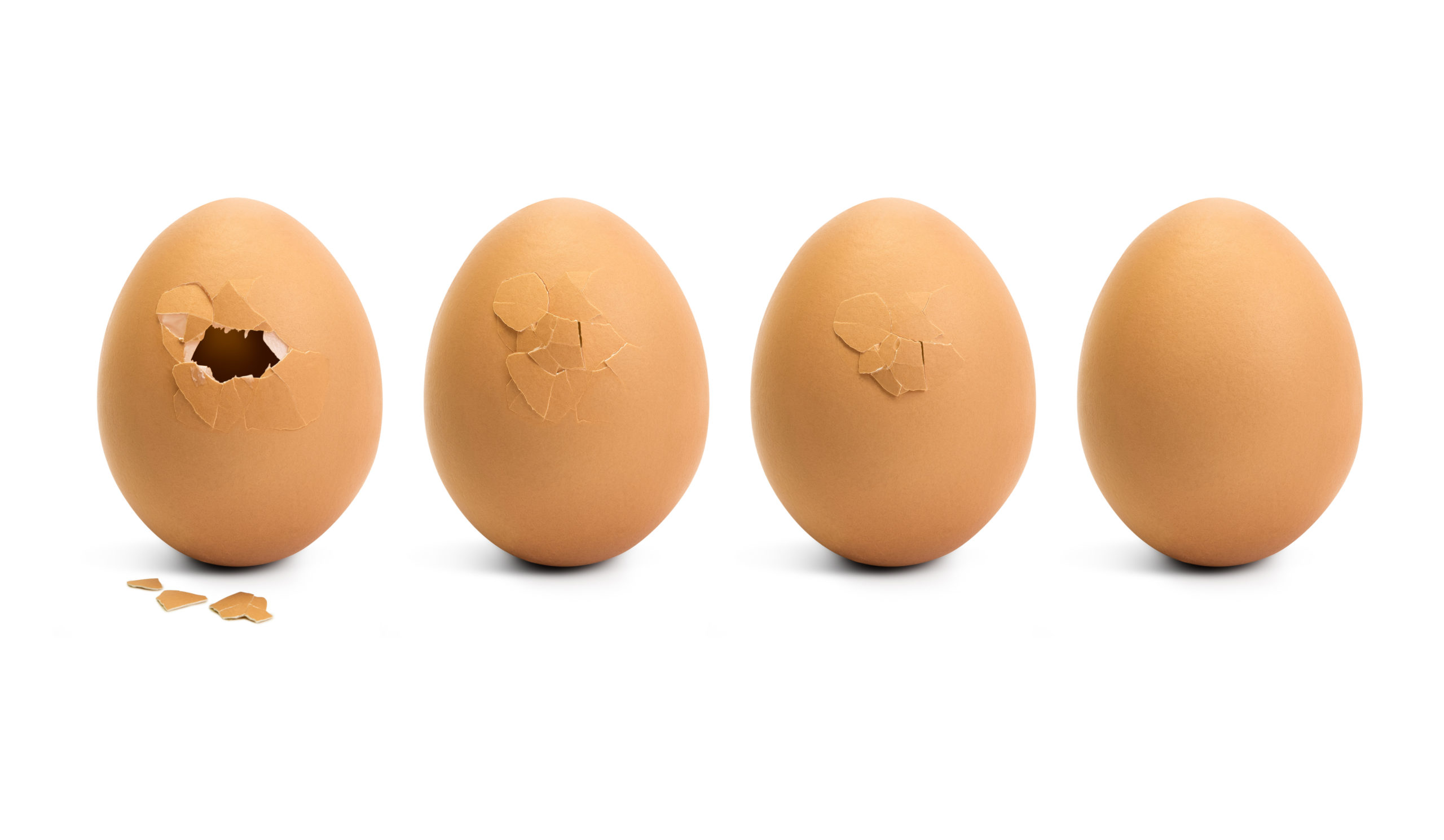USC researchers regenerate skull tissue using stem cells and 3-D printed scaffolding in swine

Posted
17 May 21
The discovery, made by an Ostrow-led research team, could soon improve the lives of human beings with critical size cranial defects.
EVERY YEAR, SURGEONS PERFORM MORE THAN 5,000 CRANIOPLASTIES (surgeries that restore cranial defects) on patients who have experienced critical size cranial defects resulting from congenital defects, head trauma or tumor removals.
Traditional materials used to correct these deficits have been bone grafts (from other humans or the patients themselves) or metal or plastic plates — none of which are ideal.
“Current solutions have quite a few drawbacks,” said Associate Dean of Research and one of the study’s authors Yang Chai PhD ’91, DDS ’96. “So we saw this really unique need in the market for patients with large skull defects.”
Undesirable outcomes could include the patient’s body rejecting another person’s bone tissue, the surgeon not being able to harvest enough of the patient’s own bone tissue to cover the defect or a titanium or a synthetic plate not growing along with a pediatric patient’s skull.
In a Stem Cells Translational Medicine article, titled “Mesenchymal stem cells and three-dimensional osteoconductive scaffold regenerate calvarial bone critical size defects in swine,” a team led by Ostrow researchers, has drawn one step closer to providing surgeons a new regenerative therapy alternative.
A Step Closer
Building upon prior work using a mouse model, the research team was able to fully heal critical size defects in swine using dental pulp neural crest mesenchymal stem cells and a 3-D printed scaffold. The larger animal, swine, has a head size, skull thickness and healing rate similar to humans, bringing the therapeutic intervention closer to actual patient care translation.
“Not only did we regenerate bone, but we have seen evidence that this newly generated bone is capable of the normal breakdown and build-up of bone cells over time — called bone turnover — which is not possible with current treatments,” explained research lab specialist Zoe Johnson, who is the article’s lead author.
In the study, the regenerated bone formed a smooth calvarial surface with both fully functional and aesthetically satisfying results.
Next Steps
With this discovery, the research team plans to file with the U.S. Food and Drug Administration, which could either order further study or approve the project to go into Phase I clinical trials.
If successful, the discovery could have major impacts on the quality of life for patients with critical size cranial defects.
“Craniofacial bones quite literally determine a person’s interface with the world; they protect vital organs that allow us to observe our environment and respond to it,” Johnson said.
The project is just one of the latest from a multi-million-dollar research endeavor spearheaded by USC called the Center for Dental, Oral and Craniofacial Tissue and Organ Regeneration (C-DOCTOR).
C-DOCTOR is a consortium of California academic institutions whose mission is to become a sustainable, comprehensive national center that enables the clinical translation of innovative regenerative therapies to replace dental, oral and craniofacial tissues or organs lost to congenital disorders, traumatic injuries, disease and medical procedures.
“Regenerative medicine had always seemed like science fiction to me,” Johnson said. “Seeing results like ours — quality bone regenerated across an injury that would not have healed on its own — made fiction feel a little more like reality.”
Improving Patients’ Lives
While the pursuit of new knowledge is certainly a driving factor for the research team in their studies, at the end of the day, it comes down to the patient.
“The driving force for our work is really about how we can improve patient care,” Chai said. “We want to be able to generate new approaches that will really reduce the pain and suffering for our patients. All of our effort, really, starts with the question: What can we do to make the patient care better for tomorrow?”
In addition to Chai and Johnson, USC study authors include Yong Chen, Tea Jashashvili, Xiangjia Li, Mark Urata and Yuan Yuan.